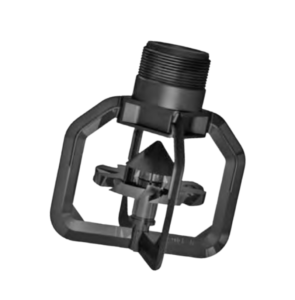 The combination of water usage and energy usage in open-loop cooling towers is a significant cost to owners. There are ways to reduce the waste of water and energy when designing the systems. How much water can be saved? Depending on your system would you believe thousands of gallons?
The combination of water usage and energy usage in open-loop cooling towers is a significant cost to owners. There are ways to reduce the waste of water and energy when designing the systems. How much water can be saved? Depending on your system would you believe thousands of gallons?
Water Use in Cooling Towers
Open-loop evaporative-type cooling towers use a lot of water and energy. Water is lost through evaporation, drift, and draining. Drift emissions from open-loop evaporative-type cooling towers are unavoidable. Stand next to a conventional cooling tower if you dare. It probably feels like you might be taking a shower. This drift becomes a loss of usable water in the cooling tower. It also becomes a potential health hazard to people near the tower breathing in the water droplets. You may not eliminate it but the size and amount of the drift can be greatly reduced.
The Handbook of Water Use and Conservation by Vickers defines the tower water use at 2.4 gallons per minute (GPM) per ton of cooling capacity.
The amount of drift can vary depending on tower design. This drift will also carry away the water treatment chemicals which will have to be made up. This drift is a function of four factors:
- The tower design
- The efficiency of the tower’s Drift Eliminators
- The efficiency of the nozzles in terms of putting the water into the fill media versus simply spraying the water into the air above the fill pack
- The velocity of the hot air exiting the top of the tower
What tower design can reduce water waste?
Cross Flow vs. Counter Flow Cooling Tower Design
A crossflow cooling tower may lose up to 0.005% of the tower flow rate due to drift. Most counterflow cooling towers with proper drift eliminators will lose 0.0004% of the flow rate because of drift. For more information on these tower design differences visit: What is a Cooling Tower? For example, the flow rate is 3000 GPM in a 1000-ton tower. The crossflow design tower tested to the Cooling Tower Institute STD-140 will lose 216 gallons of water in 24 hours. The counterflow design cooling tower, tested to the same standard, will save 80% of that water. This is a savings of almost 200 gallons in the same 24 hours. But there is even more to save.
Tower Tech Cooling Tower Beats the Standard!
Drift eliminator (DE) design is a big contributor to better water savings. The cellular DE used by Tower Tech takes three directional changes to improve savings. In a conventional crossflow cooling tower, the motors are above their drift eliminators pulling air and water through as well as water from the wind and the open basin. Tower Tech uses a forced draft tower design with the fans below the drift eliminators to improve efficiency.
Some manufacturers also provide a Counter Flow Forced Draft design. If they use the same DE product type provided by Tower Tech, they can achieve similar drift measurements. But watch out for their power consumption. Typically, they use much more horsepower than Tower Tech. Tower Tech’s improved motor and fan designs provide water savings coupled with energy savings. We will address this a bit more in part 3 of the series.
Nozzles and Velocity make a Difference
 Most manufacturers provide nozzles that produce a round umbrella spray pattern. Tower Tech model TTXR cooling towers use a free spin square pattern nozzle. This reduces dry fill and additional maintenance due to solids buildup from dry areas. It also contributes to lower water use.
Most manufacturers provide nozzles that produce a round umbrella spray pattern. Tower Tech model TTXR cooling towers use a free spin square pattern nozzle. This reduces dry fill and additional maintenance due to solids buildup from dry areas. It also contributes to lower water use.
Today, you can select a cooling tower with velocities as low as 850 feet per minute (fpm) compared with most conventional towers with velocities as high as 1,700 fpm. This lower velocity assists in lower water use and energy use.
Want an example? Visit our projects section and check out McLaren Central Michigan Hospital’s Cooling Tower Replacement.
Next week, part 2 of the series will look at water savings due to higher cycles of concentration in cooling towers.



